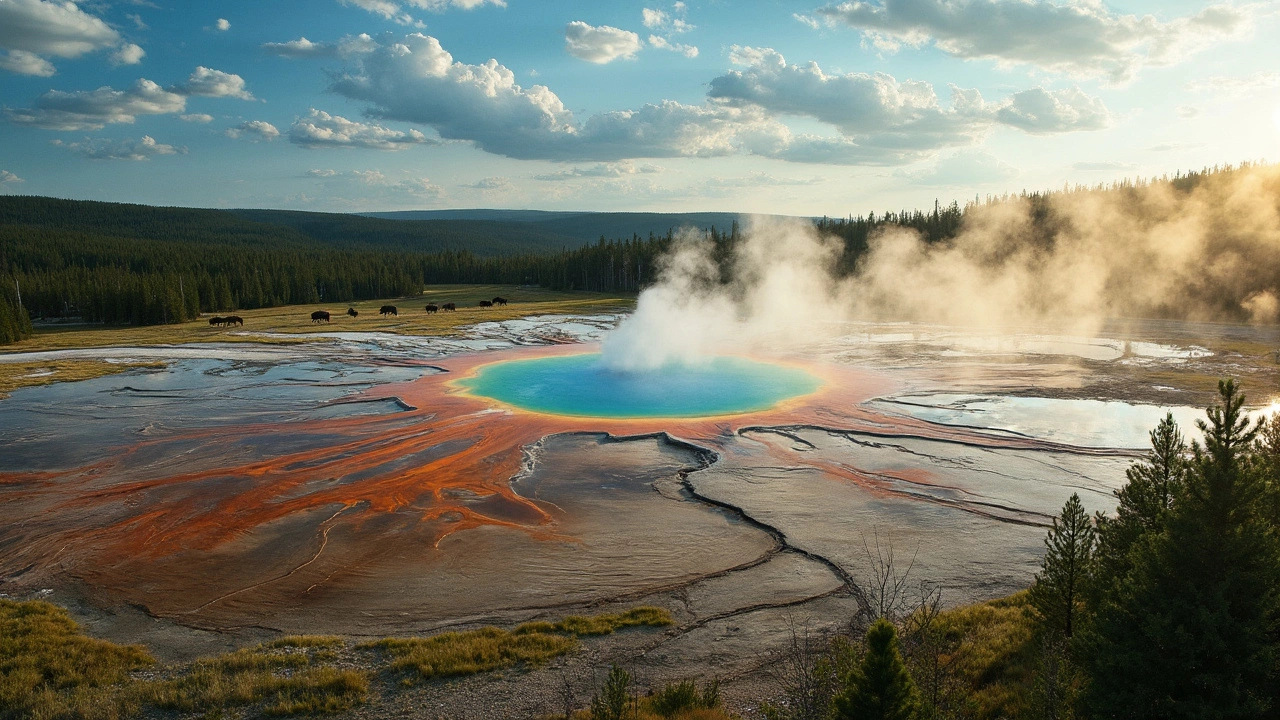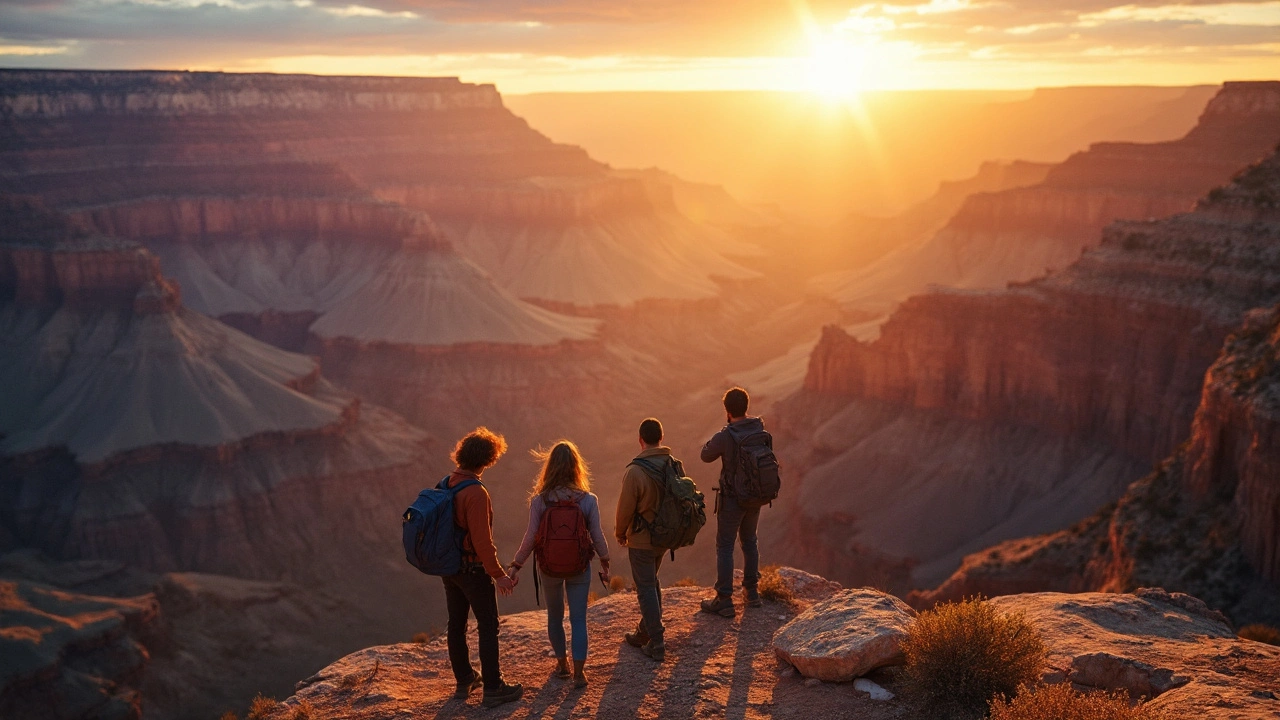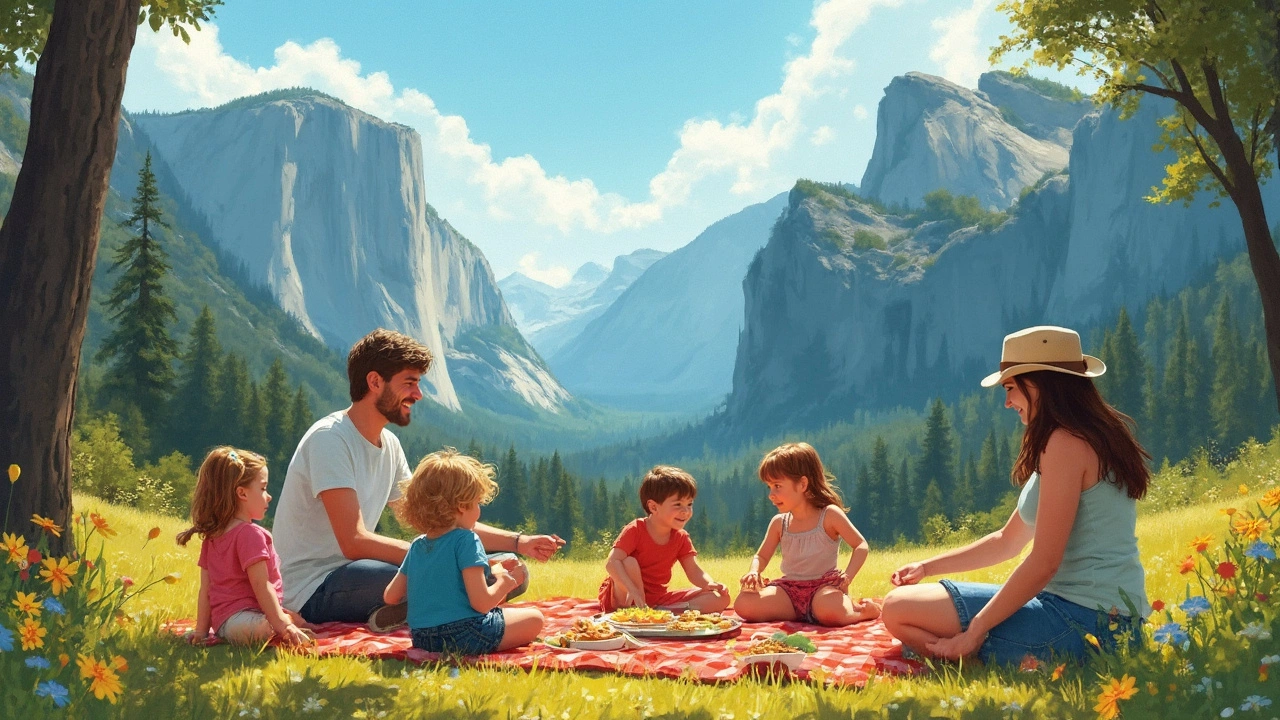Top Rated National Park in the USA: Discover the Best

Ever wondered which national park in the USA is crowned the best? Welcome to Yellowstone National Park, a marvel that tops the charts consistently. Why? Its sprawling landscapes, geysers like the Old Faithful, and diverse wildlife keep visitors in awe year-round.
Now, why does this park stand out? It's like stepping into another world. Besides its iconic geysers, Yellowstone houses a variety of ecosystems, from thick pine forests to vast mountain meadows. Dream of seeing bison lazily grazing or wolves prowling? This park offers all that and more!
Thinking of visiting? Timing is key. Spring brings colorful wildflowers, while autumn showcases golden hues and migrating birds. But beware, winter transforms it into a snowy fairytale, though some roads might be closed. Always check current conditions before heading out.
- Introduction to America's Top National Park
- Unique Features and Attractions
- Practical Tips for Visiting
- Seasonal Highlights
- Preservation and Conservation Efforts
Introduction to America's Top National Park
So, what's so special about Yellowstone? Well, besides being the first of its kind - designated back in 1872 - it's a haven for nature lovers, thrill-seekers, and anyone looking to soak up America's wild side. Spread over a whopping 2.2 million acres, this national park is nestled in the northwest corner of Wyoming, extending into Montana and Idaho.
One of the main reasons people flock to Yellowstone is its geothermal features. It's home to over half of the world's geysers, including the famous Old Faithful, which erupts like clockwork every 90 minutes or so. But that’s not all. The colorful Grand Prismatic Spring and Mammoth Hot Springs offer surreal sights you won’t find anywhere else.
The Park's Rich Biodiversity
Yellowstone is renowned not just for its thermal spectacles but also for its abundant wildlife. Think large herds of bison roaming the Lamar Valley, graceful elk, and even the elusive gray wolf. It's like stepping into a wildlife documentary! These diverse species thrive due to the park's varied ecosystems, ranging from lush forests to alpine rivers.
Here’s a cool fact: Yellowstone sits atop a supervolcano, and while that might sound terrifying, it actually plays a crucial role in creating the park's unique landscapes and geothermal activity. But don’t worry, experts keep a watchful eye on all that volcanic stuff.
Essential Tips for Visitors
If you're planning a trip, make sure to prepare for the altitude and pack layers. Yellowstone's weather can flip in an instant, especially if you're exploring higher elevations. And remember, cell service is patchy at best—so download maps or grab a paper copy at the entrance.
There's something for everyone here. Whether you're into hiking, wildlife photography, or simply unwinding in nature, Yellowstone delivers. Just be sure to stay on marked trails and practice Leave No Trace principles—it's crucial for preserving the beauty of this top rated national park for future generations.
Unique Features and Attractions
Yellowstone isn't just popular because it's vast; it's also packed with some of the most jaw-dropping features you'll find in any national park in the USA.
The Geysers: Nature's Spectacle
Old Faithful is the star of the show. It's like a reliable friend, erupting roughly every 90 minutes. But don't stop there! Check out Steamboat Geyser in the Norris Geyser Basin, currently the world's tallest active geyser.
Geothermal Wonders
Yellowstone sits on a volcanic hot spot, crafting surreal landscapes like the Grand Prismatic Spring. This rainbow-colored hot spring is so vivid it's often mistaken for an artist's creation.
Abundant Wildlife
Where else can you spot bison blocking the roads or bears roaming the meadows? Besides bison, Yellowstone is home to elk, wolves, and even bald eagles. You're practically in a living wildlife documentary!
Breathtaking Views
The Grand Canyon of the Yellowstone offers stunning vistas. Stand at Artist Point for a scene that might just leave you speechless, thanks to the cascading Lower Falls and rugged canyon walls.
| Feature | Location | Notable Fact |
|---|---|---|
| Old Faithful | Upper Geyser Basin | Erupts every 60-110 minutes |
| Grand Prismatic Spring | Midway Geyser Basin | Largest hot spring in the US |
So when planning your visit, pack your camera, because Yellowstone's wonders are waiting to fill your photo albums and memories alike. Each geyser, animal sighting, and viewpoint tells its own incredible story.

Practical Tips for Visiting
Planning a visit to the top rated national park in the USA? Here’s how you can make your trip to Yellowstone both memorable and stress-free.
Getting There and Around
Yellowstone is vast, so a car is your best friend. Most visitors fly into nearby airports like Bozeman, Cody, or Jackson Hole and rent a car. Make sure to fill up your gas tank whenever you can; opportunities are scarce inside the park.
When to Visit
Each season has its charm. Spring and fall offer fewer crowds and cooler weather, ideal for hiking. Summer boasts full access, but it’s also the busiest time. Winter requires specific preparations, check for road closures and ensure your vehicle is equipped for snow.
What to Bring
- Clothing: Pack layers. The weather can shift quickly from sunny to chilly, especially in higher altitudes.
- Food & Water: Bring snacks and water, as facilities can be far apart.
- Maps: Grab a park map at the entrance. GPS might not be reliable.
- Camera & Binoculars: Wildlife spotting is a favorite activity, and you'll want to capture those moments.
Staying Safe
Wildlife is amazing, but remember to keep a safe distance. Stay at least 25 yards from animals like bison and elk, and 100 yards from bears and wolves. Note that feeding animals is prohibited.
Lodging and Dining
Inside the park, you’ll find a range of accommodations, from campgrounds to lodges. Book as early as possible, especially during peak seasons, as places fill up quickly. Dining options are limited, so carry packed meals or snacks for a full-day adventure.
Extra Money-Saving Tip
Consider purchasing an America the Beautiful National Parks Pass if you’re planning to visit multiple parks in a year. It provides unlimited access to over 2,000 federal recreation sites.
With these tips in mind, you're all set to enjoy your Yellowstone adventure. Just don't forget your sense of awe and a trusty camera to capture the stunning landscapes!
Seasonal Highlights
Yellowstone National Park is a year-round spectacle. Each season paints the park in different hues and offers unique experiences.
Spring Awakening
Come spring, Yellowstone bursts into life. Between April and June, wildflowers start to bloom, decorating meadows with vibrant colors. It's also the best time to spot wildlife with newborns. Keep an eye out for bison calves, often seen playfully prancing through the fields.
Summer Splendor
Summer is the high season. From June to August, the park sees the most visitors, so expect some crowd. The weather is warmer, perfect for hiking and camping. Trails like Uncle Tom's down to the base of the Lower Falls offer breathtaking views, but remember, everyone wants to catch a glimpse of those iconic spots.
Autumn Colors
Fall, stretching from September to November, is quieter yet stunning, with splendid foliage. The park transforms as the leaves turn orange and gold. It's also elk mating season, and their calls echo through the valleys—an incredible natural symphony.
Winter Wonderland
From December to March, the park becomes a snowy wonderland. While many roads close, it opens up opportunities for snowshoeing and snowmobiling. If you're into skiing, the trails around Canyon Village are a must. Keep in mind, though, that only the north entrance is open year-round.
Table: Yellowstone Seasonal Overview
| Season | Highlights |
|---|---|
| Spring | Wildflowers, baby animals |
| Summer | Hiking, camping, crowds |
| Autumn | Foliage, elk bugling |
| Winter | Snowshoeing, limited access |
No matter when you visit this top rated national park, there's always something captivating to experience.

Preservation and Conservation Efforts
Yellowstone National Park isn't just about stunning views; it’s a living example of conservation at its best. Since its establishment in 1872, the park has been a pioneer in wildlife management and environmental stewardship. It was the world's first national park and set a precedent for conservation efforts globally.
The Wolves Return
A major success story in Yellowstone's conservation efforts is the reintroduction of wolves in the mid-1990s. These predators had been eradicated by the 1920s, causing a ripple effect that negatively impacted the entire ecosystem. The reintroduction of wolves has helped restore balance, controlling elk populations and allowing vegetation to flourish again. A park ranger once noted,
"Bringing wolves back revitalized Yellowstone's ecological balance. It was like hitting the reset button for nature."
Keeping the Geysers Gushing
Geysers need those underground water reservoirs and geothermal heat to keep working their magic. The park team monitors any kind of human activity and natural changes that might threaten these hot springs, ensuring that iconic features like the Old Faithful remain a wonder for generations to see.
Trash-Free Trails
Yellowstone aims for zero waste by reducing, reusing, and recycling any waste generated by visitors. The park provides recycling bins and encourages visitors to keep the trails trash-free. The 'Leave No Trace' policy is strictly followed, reminding everyone to clean up after themselves.
Stats on Sustainability
Curious about the impact? Here's a quick look:
| Effort | Outcome |
|---|---|
| Wolf Reintroduction | Increase in native plant species |
| Water Monitoring | Visible improvement in water quality |
| Waste Management | 101 tons of waste diverted from landfills in 2024 |
With such proactive measures, Yellowstone remains a bright star among USA national parks in both beauty and responsibility. Visiting this top-rated park gives you insight into how conservation and tourism can work hand-in-hand for a sustainable future.